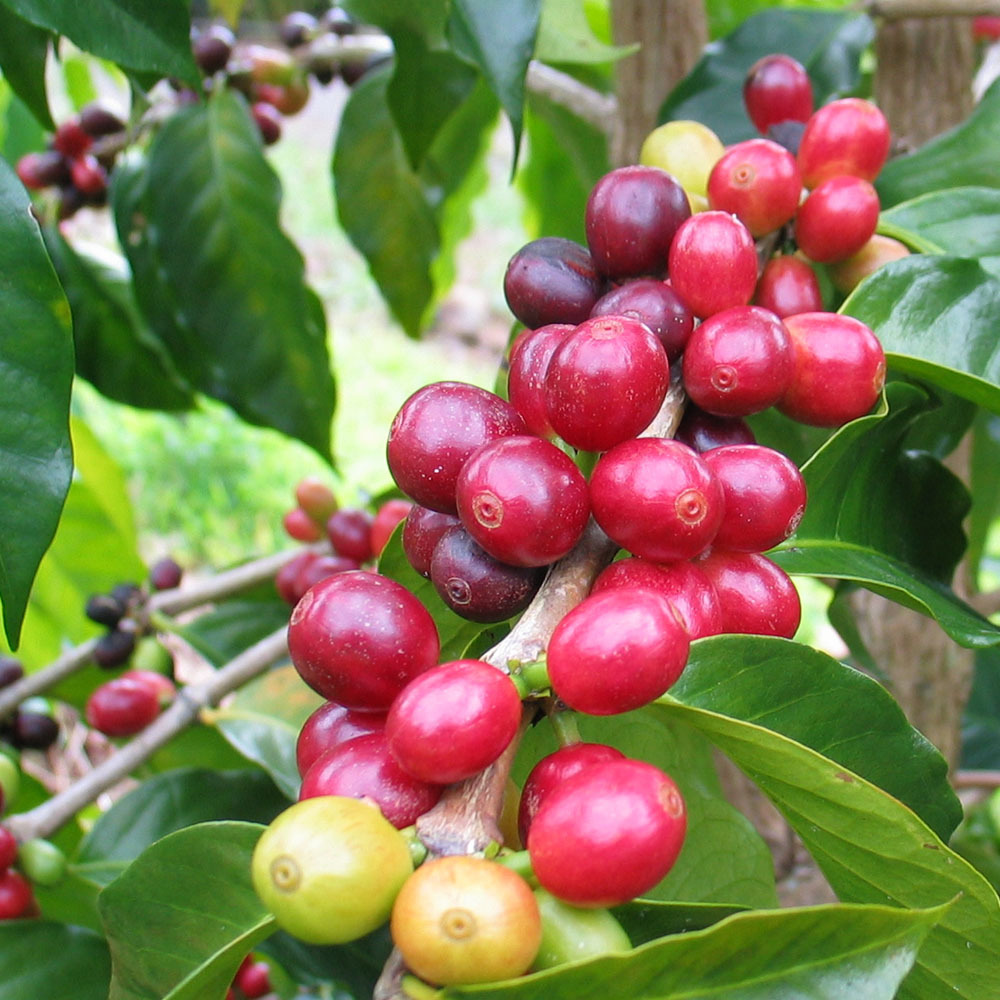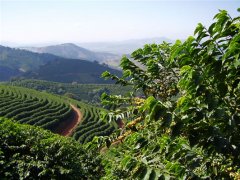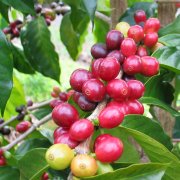Coffee grading in Kenya
The growth environment of boutique coffee beans also has higher requirements. Generally grow at an altitude of 1500 meters or even more than 2000 meters above sea level, with appropriate precipitation, sunshine, temperature and soil conditions. Some world-famous coffee beans also have a special geographical environment, such as the alpine clouds in the Blue Mountains, the free shade provided by Kona's "Flying Cloud" in the afternoon, and the volcanic ash soil in Antigua, which provide conditions for the growth of boutique coffee.
Usually Kenyan coffee is classified as follows:
1) Common categories:
Hand-picked coffee fruit, picked by hand, picked out immature fruit (unripe), overripe fruit (overripe) and other defects, peeled, after about 36 hours of fermentation, placed on a metal grid for sun drying, in the processing plant to remove the seed shell (parchment), become a blue-green appearance of attractive Kenyan raw beans.
These beautiful raw beans are graded according to particle size (size), shape (shape) and weight (weight):
E:kenya E, elephant beans, above elephant bean,18 (including round beans)
Round beans containing large grains, like PB, are small in quantity.
AA:Kenya AA,17-18 mesh
AB:Kenya AB,15-16, which is a mixture of An and B.
Grade An above 17 mesh (6.8mm), grade B above 16 mesh (6.3mm)
Light beans selected by TT:AA and AB by airflow separator
Over PB:Kenya PB,15, round beans and peaberry account for about 10% of Kenyan coffee.
CRV 12-14 mesh and PB light bean screened by air flow separator
Under 12 eyes, there are more defective beans, chopped beans and light beans.
HE: beyond the above level becomes HE (Hulled Ears)
2) the raw beans without official standard grading are UG (ungrade).
E,AA,AB,PB → UG1
C,TT,T,HE → UG2
3) MBUNI (sun beans, non-washing treatment)
All raw beans are sorted by gravity (gravity separator)
MH:heavy mbuni, heavy beans, yellow, free of black beans, fragments, dried fruit or other defects
The cup test shows a typical sun flavor with no taste defects.
ML:light mbuni yellowish green, with a small amount of worm-eaten beans or black beans, no stinky beans or fragments
There is no earthy or other bad taste in the cup test.

Important Notice :
前街咖啡 FrontStreet Coffee has moved to new addredd:
FrontStreet Coffee Address: 315,Donghua East Road,GuangZhou
Tel:020 38364473
- Prev

The improvement of coffee taste and how to describe it
Boutique coffee is good coffee and is harmless to health. Unlike coffee made from low-quality coffee beans, boutique coffee uses high-quality coffee beans, freshly made coffee, which is harmless to health, but drinking in moderation is good for the body and mind, sour mocha, Hawaiian sour coffee, Mexico, Guatemala, Costa Rica high real estate, Gillimazaro, Colombia, Zimbabwe, Salva.
- Next

Coffee Grading in Kenya
The growing environment of fine coffee beans also has higher requirements. It generally grows at an altitude of 1500 meters or even 2000 meters above sea level, with suitable precipitation, sunshine, temperature and soil conditions. Some world-famous coffee beans also have special geographical conditions, such as the mountain clouds in the Blue Mountains, the free shade provided by afternoon clouds in Kona, and the volcanic ash soil in Antigua.
Related
- Beginners will see the "Coffee pull flower" guide!
- What is the difference between ice blog purified milk and ordinary milk coffee?
- Why is the Philippines the largest producer of crops in Liberia?
- For coffee extraction, should the fine powder be retained?
- How does extracted espresso fill pressed powder? How much strength does it take to press the powder?
- How to make jasmine cold extract coffee? Is the jasmine + latte good?
- Will this little toy really make the coffee taste better? How does Lily Drip affect coffee extraction?
- Will the action of slapping the filter cup also affect coffee extraction?
- What's the difference between powder-to-water ratio and powder-to-liquid ratio?
- What is the Ethiopian local species? What does it have to do with Heirloom native species?

